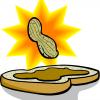Hi guys!
as i'm starting assembly of the engine i'm in a bit of a dilemma...
I'm doing a fast road engine based on pre A+ 1275 that's already bored and honed for 1293 - Keith Calver Sport Spec head, 1.4:1 rockers, twin HS4 carbs, H&H tuned distributor for the engine specs, and it will go over Mk3 Cooper S gearbox.
Now -
Dilemma no1: Pistons/Rods
The block is ready to fit with Hepolite 21253 +020 pistons that i've got mounted on GT conrods (pre A+, with big balance weights on the big end)
The other set of pistons i have is a set i got from Keith Calver - a set of Graham Russell pistons +040 and a set of A+ conrods that i'd need to finish polishing/balancing as they're 12gr apart (heaviest to lightest), and would need to bore/hone the block to accept the pistons, perhaps shave the deck.
The combination of pistons Russell Engineering pistons with A+ rods is 100g lighter than the set of Hepolite 21253 +020 with GT rods.
The pistons themselves are better, BUT will need additional work on the block.
Which option to go for - would lighter +040 option make such a difference worth extra bother and cost of block machining and rod balancing and polishing - or stick with the easier option of just putting the enigne together?
Dilemma no2: The camshaft
I've got 2 cams:
1) Kent MD266
2) Calver RE13OT
Now, the idea is to use the car with 3.44:1 FDR, 165x10 wheels, as weekend fun car, it's definitely going to be pushed, but will also have its share of daily traffic driving around the Serbian capital, as well as travelling around the country - mini meetings and so on.
I am attracted to higher power output that RE13OT makes and am pretty sure it's not undrivable, but i worry that to get the most fun of it i'd need to be over 3000rpm all the time, pushing the engine often past 6500rpm.
It's said to have 276 degree intake, and to be a bit lumpy on the idle and pull nicely past 2000rpm, with power not backing off untill 7000 rpm, but much more drivable than Kent 286. - and it's guaranteed to work best with Calver's head that i've got and the 1.4:1 rockers.
- on the other hand i'm also very attracted to MD266 that i've got at first - its all-round ability, low down torque and peak power up to 6500rpm. It's friendlier to the engine, smoother, better on economy, better for everyday driving - but would it be that much less fun than the meaner RE13OT?
I'd appreciate any comments/opinions on these cams (unfortunately i haven't driven a car with either of those two) - is the RE13OT a PIA to drive calmly and around town, does it require an engine rebuild every 15k miles - or would it be close to 266 for everyday stuff, just with more power on the top end?
Cheers guys! Much appreciated!
Luka



















